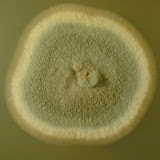I have worked in the field of indoor air quality since I graduated with my doctorate in 2002. But I started studying molds much earlier in my career as an undergraduate research student (1990). In all those years I have never lost my fascination with these remarkable creatures. That fascination and experience is what defines my goal as Director of Clean Air Labs.
As a laboratory director, I strive to provide inspectors and their clients with the best possible microbial detection technology available. In addition, I try to provide clients with the means wherewithal to use that technology. Because, in the microbial world, there are all kinds of werewolves, but no silver bullets. I view any technology, no matter how grand, as a tool, and treat it as such. No single technology is ever going to provide all the solutions. Microbes live together in complex and dynamic communities, regardless of habitat. Unlike asbestos or lead, microbial communities are subject to rapid change in relation to environmental condition. Inspectors need to be able to deal with the biological dynamics inherent in microbial communities in order to solve indoor air problems. Hence, an inspector needs many tools in the toolbox. My goal is to provide those tools along with the knowledge to answer the tough biological questions that are so often associated with problems found indoors.
A life goal I have is to educate. I am convinced that our children need to learn science starting in grade school; hence, I founded the IAQ Outreach Program with Clean Air Labs, where I and my staff educate elementary students concerning the importance of healthy indoor environments. A more advanced form of the program allows local high school classes to visit the lab on field trips to have hands-on experience with biotechnology and DNA assays for environmental microbiology.
Specialties:
Educator, DNA-based Mold Investigations, Inventor, Consultant, Product Evaluator, Seminar Speaker, Research Scientist, Fluorescent Microscopy, Microbial Detection Technology
Tuesday, February 26, 2008
A little About Me
Labels:
biotechnology,
DNA,
education,
grade school,
indoor air,
microbiology,
microscope,
mold,
QPCR
Subscribe to:
Post Comments (Atom)

No comments:
Post a Comment